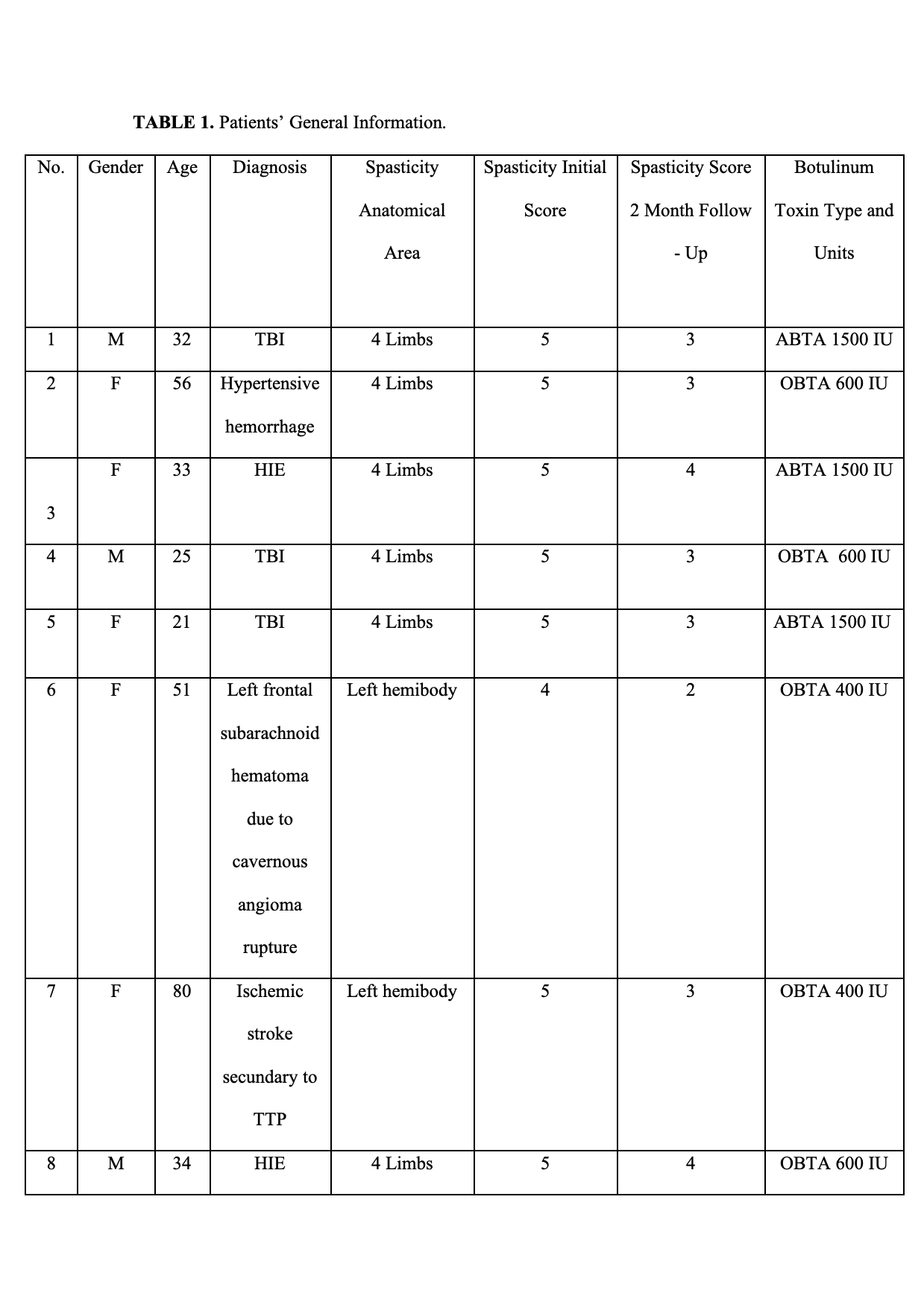Objective: Present a series of cases of patients with refractory fever associated to spasticity secondary to a brain or spinal cord injury who developed refractory fever without an infectious etiology or central origin. Treatment with botulinum toxin achieved an improvement of spasticity and resolution of the fever in our patients and no recurrence of fever. This is significant because to our knowledge this has not been reported before.
Background: Brain and spinal cord injuries may cause very severe spasticity that can be associated with persistent fever. In these cases, infectious and other non-infectious causes must be ruled out.
Method: We report 14 cases treated between July 10, 2010, and December 16, 2016, who had brain injury or spinal cord injury with severe spasticity and refractory fever. Infectious and non-infectious causes of fever were studied with cultures and laboratory and imaging studies.
Results: During the treatment of 14 patients with spasticity, other causes of fever were excluded. Treatment with botulinum toxin type A improved their spasticity, and the fever resolved within a period no greater than 48 hours.
Conclusion: We report a series of cases of patients with refractory fever associated to spasticity secondary to a brain or spinal cord injury. Treatment with botulinum toxin achieved an improvement of spasticity and fast resolution of the fever in our patients. This is significant because to our knowledge this has not been reported before.
References: 1. Sneed RC. Hyperpirexia associated with sustained muscle contractions: an alternative diagnosis to central fever. Arch Phys Med Rehabil. 1995; 76: 101-103. 2. Mandac RB, Hurvitz EA, Nelson VS. Hyperthermia associated with baclofen withdrawal and increased spasticity. Arch Phys Med Rehabil. 1993; 74: 96-97. 3. Heiman-Patterson TD. Neuroleptic malignant syndrome and malignant hyperthermia. Med Clin North Am 1993.77: 477-492. 4. Dressler D, Bhidayasiri R, Bohlega S, et al. Botulinum toxin therapy for treatment of spasticity in multiple sclerosis: review and recommendations of the IAB-Interdisciplinary Working Group for Movement Disorders task force. J Neurol 2017; 264:112-120. NOTE: Presented as a poster in 13th congress of controversies in Neurology, Madrid, Spain, April 6, 2019. 5. Dressler D. Clinical applications of botulinum toxin. Curr Opin Microbiol. 2012; 15:325–336. 6. Bohannon RW, Smith MB. Interrater reliability of a modified Ashworth scale of muscle spasticity. Phys Ther. 1987; 67: 206-207. 7. Kumar R, Ghaliwal HP, Kukreja RV, Singh BR. The Botulinum Toxin as a Therapeutic Agent: Molecular Structure and Mechanism of Action in Motor and Sensory Systems. Semin Neurol. 2016; 36
To cite this abstract in AMA style:
J. Lester, G. Alvarez-Resendiz, E. Klériga, F. Videgaray, G. Zambito. Treatment with Botulinum Toxin for Refractory Fever caused by Severe Spasticity [abstract]. Mov Disord. 2020; 35 (suppl 1). https://www.mdsabstracts.org/abstract/treatment-with-botulinum-toxin-for-refractory-fever-caused-by-severe-spasticity/. Accessed December 24, 2025.« Back to MDS Virtual Congress 2020
MDS Abstracts - https://www.mdsabstracts.org/abstract/treatment-with-botulinum-toxin-for-refractory-fever-caused-by-severe-spasticity/

